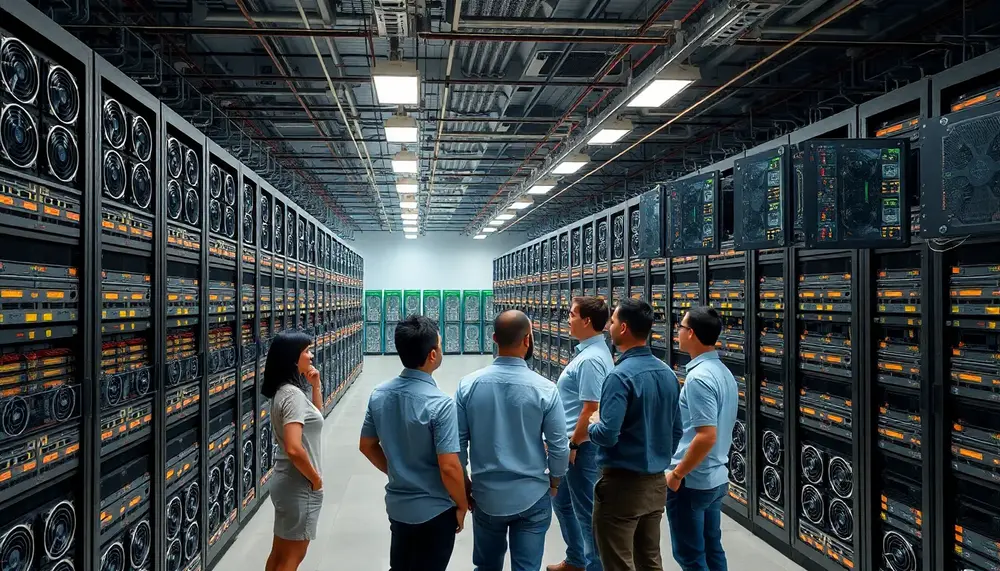Testnet
Testnet
When diving into the world of Bitcoin Mining, one will encounter a myriad of technical terms. One such term that is crucial to understand is "Testnet". Don't fret; we're here to explain this term in an easy-to-understand way for beginners and experts alike.
Defining 'Testnet'
A Testnet is a term used in the Bitcoin world and it refers to an alternative Bitcoin blockchain, to be used for testing. This 'testing ground' allows developers or bitcoin miners to experiment, without having to use real bitcoins or worrying about breaking the main bitcoin chain. It can be reset to an earlier state at any time, which makes it perfect for debugging.
Why is 'Testnet' Important?
You might be wondering, why is the Testnet vital? When mining bitcoins or developing new software, changes could potentially disrupt the system or create security risks. The Testnet lets you simulate situations and spot potential problems before they impact real transactions.
'Testnet' and 'Bitcoin Mining'
In terms of Bitcoin Mining, the Testnet is particularly significant. Mining is all about transactions, and miners often need to test new software or updates. The Testnet allows them to ensure everything runs smoothly without affecting actual Bitcoin transactions.
Understanding 'Testnet' Types
There are multiple versions of Testnets available. The most common are Testnet3, the current version, and Segnet, which tests the SegWit upgrade. Each one serves specific testing needs, offering different features for miners and developers.
In conclusion, the Testnet functions as the training ground for Bitcoin miners and developers. Any changes, bugs, or upgrades can be thoroughly checked on the Testnet before being launched on the main Bitcoin network, ensuring the stability and security of your Bitcoin experience.
Blog Posts with the term: Testnet

This article provides a comprehensive guide on using MetaMask for Ethereum mining, covering the setup process, connecting to mining pools, and optimizing configurations. By following these steps, beginners can efficiently start their Ethereum mining journey with enhanced security and performance....

Ethereum mining originated from Vitalik Buterin's vision in 2013 for a blockchain that could support complex applications, leading to the launch of Ethereum with smart contract capabilities on July 30, 2015. The network's growth was fueled by an innovative crowdfunding...

The article explains the Wallet Import Format (WIF) in cryptocurrency, detailing its importance for securely managing private keys and providing a step-by-step guide on creating and using WIF. It highlights how WIF simplifies key management, enhances security with checksums, ensures...

Ethereum Dapp mining involves validating transactions and securing the Ethereum network through decentralized applications (Dapps) that run on smart contracts, offering rewards in Ether. This guide covers key concepts, setup instructions for your mining environment, and best practices to maximize...

Ethereum testnet mining allows beginners to learn about blockchain technology risk-free by using test Ether (ETH) on separate blockchains like Goerli, Rinkeby, and Kovan. This guide covers setting up a testnet environment, choosing the right tools, and installing mining software...

The US and Switzerland are moving to build Bitcoin reserves, JPMorgan tested tokenized government bonds on a public blockchain, and Solana led Web3 growth in Q1 2025. Crypto Valley saw continued expansion despite global competition, while The Economist criticized the...

DMG Blockchain and Riot Platforms face mixed investor sentiment amid valuation concerns, while Story, Kaspa, and Celestia see significant crypto market gains....

Bitcoin mining is becoming highly centralized, with Foundry and AntPool controlling over 51% of the hashrate, raising concerns about network security and potential manipulation. Meanwhile, Ethereum’s shift to Proof-of-Stake redistributed GPU mining power to other networks, driving innovation in alternative...

